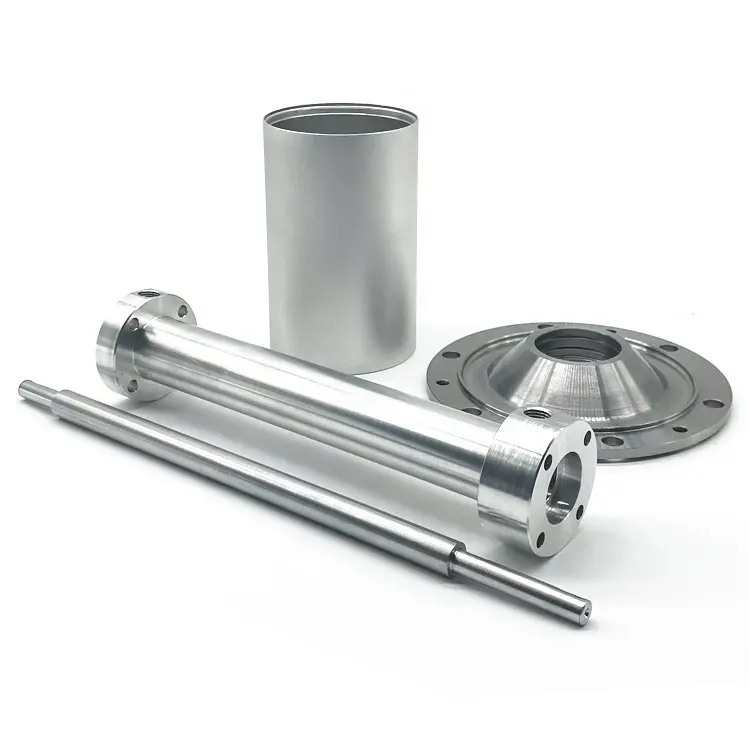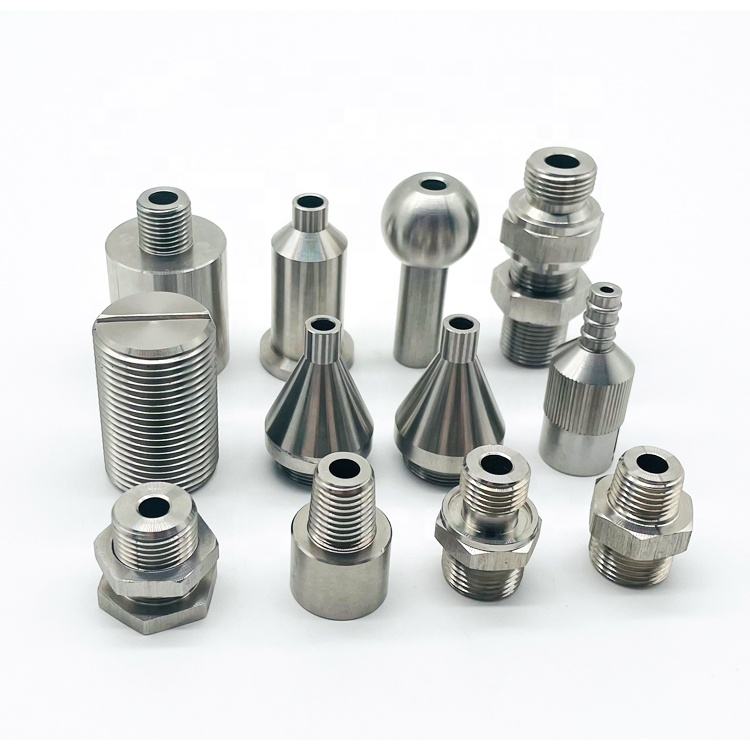Post
Beginning with the design and manufacturing process, it is essential to use the appropriate tools and materials, ensure precise fits, and maintain tight tolerances because quality is more important than cost and lead time. For this reason, CNC machining is an excellent choice for use in the aerospace industry. The use of automated computer numerical control (CNC) machining helps this manufacturing method achieve a high degree of precision while reducing the likelihood of errors caused by human intervention. Additionally, CNC machining is a quick method, particularly when working with a limited number of components.

Components for modern aircraft, such as the landing gear (components such as brackets and torque links), the engines (compressors and turbines), and the rest of the aircraft are all manufactured with the help of CNC machining. Components of the structure, such as the fuselage, bulkheads, and other parts of the fuselage, can also be machined with a CNC. Additionally, gears, shafts, and housings that are essential to moving parts are frequently machined with a CNC. Last but not least, piston engine casings are frequently CNC machined, particularly in rotorcraft like helicopters. The extreme environments and use cases experienced by airplanes, helicopters, and spacecraft require specialty materials, which CNC machining works well with. CNC machining also works well with the materials that are required for aerospace components. Titanium, particularly grades 2 and 5, which is used in engine components due to its heat resistance and strength, is one of these materials. Other materials include nickel, steel, and aluminum. Titanium is an extremely expensive material, and as a result, it cannot be utilized in every component of the airplane.
Alloy steels, in particular 4340 and 4130, are also used in the manufacturing of aerospace components. 4340 steel is tough and strong, and it has a high potential hardness; these characteristics make it ideal for the high loads that are experienced by aircraft landing gear. The strength to cost ratio of steel, especially when compared to titanium, is favorable. However, steel is a denser and heavier material, which limits its use in aerospace applications. 4130 steel also has a high tensile strength and is used in gears, fasteners, and external components. Steel, in contrast to titanium, corrodes easily and must therefore be coated if it is going to be exposed to moisture.
Last but not least, because of its low density, aluminum has a high strength-to-weight ratio. In addition to this, aluminum is simple to machine and can do so two to three times as quickly as steel. Aluminum 2024 has good fatigue resistance, which means it can withstand many load cycles. Aluminum 6061 is a precipitation hardening aluminum alloy that has good corrosion resistance and can be found in aircraft wings and fuselages. Aluminum 7075 has a good combination of fatigue resistance and corrosion resistance, which leads to its use in aircraft structural components that are used in a wide variety of applications. Machining components using a CNC machine is not always a straightforward process, regardless of the application, and this holds true for aerospace components as well. The following article will discuss three distinct challenges that frequently arise during the manufacturing of aerospace components, as well as potential answers to those challenges.
1. The processing of large parts with thin walls
The housings of certain components, like those found in engines and compressors, have large cavities on the inside.For instance, a CNC machine needs to cut away a significant portion of the material before it can create the transmission housing for a helicopter blade.It takes a significant amount of time, results in a significant amount of scrap, and causes residual stresses in the part, which can cause distortion or warping. This is problematic when working with tight tolerances and high standards.
If both of these tests are passed, then you can continue prototyping and testing the part. The IRMR should be greater than 85%, which indicates that you have removed less than 15% of the internal part volume. The ERMR, which compares the final part bounding box volume to the stock volume, should be greater than 30%. If both of these tests Custom Sheet Metal Fabrication are passed, then you can continue. However, if either of these values is outside of the acceptable range, the manufacturing of your component may be difficult while still adhering to the tolerances, or you may find that it does not perform as expected.
If only a few components are needed, you may be able to machine one, put it through its paces, and move on to the next if the results of the first test are satisfactory. Casting these types of parts is not always possible, but when it is, it is a method that is better suited to the production of large thin-walled parts. Casting allows for less material waste and a reduction in warpage, but CNC machining may still be required for finishing and maintaining tolerances.
You can finally use specialized high-performance 5-axis CNC machines that give you greater control over force, power, and speed. These machines allow you to machine thin-walled parts without having to apply an excessive amount of force because you can use lower forces, power, and speed. It can be deformed by high forces. Additionally, you can machine parts symmetrically with ADOC or RDOC, which helps distribute forces and, as a result, reduces the amount of residual stress.

2. Be able to manage complicated geometries
As a result of the one-of-a-kind demands placed on aerospace components, the geometries of these parts are frequently quite complicated in order to minimize weight while maximizing strength or to facilitate airflow over the surface of the part.
On the other hand, these complicated geometries can frequently be overly complicated. Such as the case when the interior components are designed with intricate organic surface geometries. It is in everyone's best interest to keep the component design as straightforward as is humanly possible given that increased complexity results in longer machining times and, potentially, longer searches for capable suppliers.
It may not be necessary to do anything more than facilitate design for manufacturability (DFM) between engineers and designers in order to alleviate the current situation. DFM takes into account the constraints of manufacturing and takes into account the practicability of the design in terms of time and cost from the point of view of the processing. This can help engineers consider the circumstances in which complexity is truly required and those in which it is of less significance. For instance, internal components are not essential to the flow of air and therefore do not require elaborately curved surfaces.
3. Part size: CNC limit
The last obstacle to overcome in part geometry is the part size.Aircraft are enormous assemblies that are composed of millions of parts, the majority of which are quite small. Because of this, aircraft require some particularly large assemblies.Because the bed of a typical machine tool is only a few feet long, it is not sufficient for manufacturing structural components or other large parts. As a result, finding a supplier that has the capability to manufacture these items can be difficult.
In order to resolve this issue, you will need to locate a new supplier that possesses a sizable CNC machine that is capable of dealing with the part size. In the event that this is not the case, you will be required to redesign the parts in order for them to fit, which may involve breaking larger components down into smaller pieces. On the other hand, this may result in an increase in the total weight because the assembly of multiple smaller sections requires an increased number of fasteners.
Altering the procedure of production is yet another approach that could be taken. Casting allows for the production of larger parts in a single piece; however, post-processing may still necessitate CNC machining. Because of this, it is not a particularly cost-effective swiss machining services choice for CNC machining of parts produced in small batches.

komentarze









